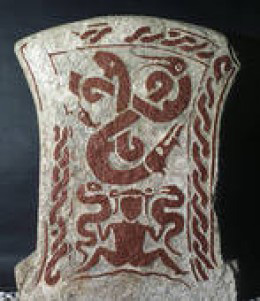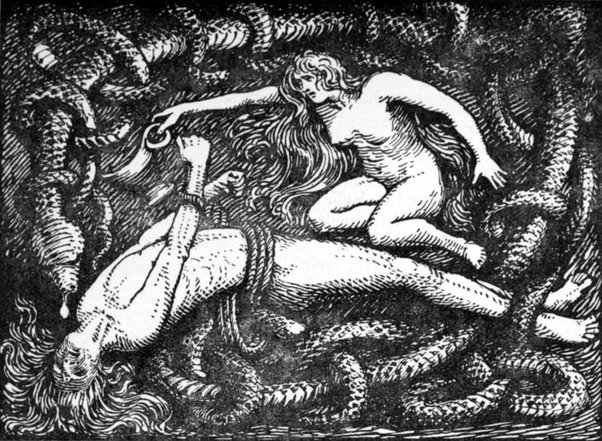Nestled in the rich tapestry of Gotland’s history lies a captivating artifact: a picture stone dating back to 400-600 AD. This ancient stone, found on the Baltic island of Gotland, Sweden, holds a wealth of historical and cultural significance. Its intricate carvings have been interpreted as depicting Vitastjärna (White-star), a central figure in the local creation myth known as the Gutasaga. Interestingly, Vitastjärna bears a striking resemblance to the Minoan snake goddess and the birth-giving goddess from the Balkans, suggesting a fascinating confluence of mythological traditions.
Vitastjärna and the Gutasaga

The Gutasaga is the ancient creation story of Gotland, a narrative passed down through generations that tells the tale of the island’s origins and its people. At the heart of this myth is Vitastjärna, also known as White-star. She is depicted on the picture stone with snakes, a symbol traditionally associated with prophecy and fertility. According to the Gutasaga, these serpents foretold the birth of Vitastjärna’s sons, who would go on to play pivotal roles in the island’s history. The image of Vitastjärna surrounded by snakes serves as a powerful symbol of birth, renewal, and the divine influence in the lives of the Gutar, the ancient people of Gotland.
Parallels with the Minoan Snake Goddess
The depiction of Vitastjärna on the Gotland picture stone has drawn comparisons to the Minoan snake goddess, a figure from the ancient civilization of Crete. The Minoan goddess is often shown holding snakes, symbolizing her dominion over fertility and the natural world. This parallel suggests a shared symbolic language that transcends geographic boundaries, hinting at a deeper connection between these ancient cultures. The Minoan civilization, known for its sophisticated art and religious iconography, may have influenced the Norse myths, or perhaps both traditions drew from an even older, shared source of mythological motifs.
Connections to the Balkans’ Birth-Giving Goddess

Further intriguing is the resemblance of Vitastjärna to the birth-giving goddess from the Balkans. This deity, like the Minoan snake goddess, is often depicted with snakes and associated with fertility and childbirth. The similarities between these figures suggest that the symbolism of the snake as a harbinger of life and renewal was widespread across ancient Europe. The picture stone from Gotland, therefore, not only illuminates local Nordic beliefs but also connects to a broader tapestry of ancient European mythology.
A Window into the Past
The Gotland picture stone is more than just an artifact; it is a window into the beliefs, stories, and artistic expressions of ancient societies. Its carvings encapsulate the reverence for life, fertility, and the divine, themes that resonate across cultures and epochs. The portrayal of Vitastjärna, with her enigmatic snakes, bridges the mythological traditions of the Norse, the Minoans, and the Balkans, revealing the interconnectedness of human cultures and their shared quest to understand the mysteries of existence.
In studying this stone, we gain insight not only into the specific myths of Gotland but also into the universal themes that have shaped human storytelling and religious expression throughout history. The picture stone from Gotland stands as a testament to the enduring power of myth and the intricate web of cultural exchange that has enriched our shared heritage.
